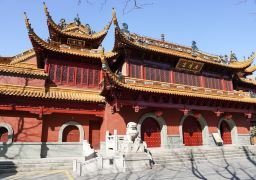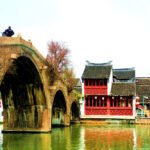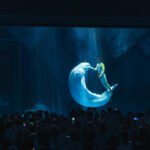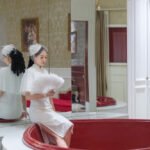Taiqing Palace in Shanghai, also known as Qinci Yangdian, is believed to be a temple granted by the emperor of the Tang Dynasty for the worship of Emperor Dongyue (the God of Mount Tai), and it is one of the earliest Taoist temples in the Shanghai area. This Taoist temple is thriving with incense, and it is said that the efficacy of prayers and blessings here is comparable, if not superior, to those of Longhua Temple and Jade Buddha Temple. Taiqing Palace mainly consists of buildings such as the gatehouse, Dongyue Hall, Sanqing Hall, Scripture Pavilion (Laojun Hall), and Merit Hall. Although the temple is not large and most of the halls were built in modern times, the architecture within the temple is very grand and atmospheric. When entering the temple, a donation of 5 yuan for incense and flowers will be rewarded with two incense sticks for worship. On the first and fifteenth days of the lunar month or other Taoist festivals, believers gather in the temple, making it very lively. On the lunar March 28th, the birthday of Emperor Dongyue, a ‘Lotus Boat Meeting’ is held. Dongyue Hall is a Ming Dynasty building with exquisite carvings, and under the eaves of the hall, there is a plaque inscribed with ‘Qinci Yangdian’ by the famous calligrapher Aisin-Gioro Yuqi. This hall mainly worships Emperor Dongyue, Bixia Yuanjun, and Bingling Duke (Prince of Dongyue). The eastern and western wings in front of the hall are two-story buildings with corridors, with the front rooms on the ground floor dedicated to the worship of the Ten Kings of Hell, and the wings dedicated to the worship of the Sixteen Officials. The back hall is the Sanqing Hall, a modern all-brick and wood structure, which enshrines the Taoist deities ‘Sanqing,’ namely, Yuanshi Tianzun, Lingbao Tianzun, and Daode Tianzun, with their statues tall and majestic. The eastern and western side halls mainly worship: Zu Tianshi, San Guan Emperor, Guan Sheng Emperor, Cihang Daoren, Lu Zu, and local deities. The Scripture Pavilion has four floors; the first floor serves as a scripture hall, the second floor is a Taoist library open to the public and believers, mainly displaying modern Taoist classics, works, and Taoist cultural books. The third floor is the Scripture Pavilion, which houses important Taoist scriptures, displays Taoist important documents and artifacts from various dynasties. The fourth floor is the Laojun Hall, which enshrines the treasure of the temple – a ten-thousand-year-old rosewood carving of Laojun. To the east of the Scripture Pavilion, there is a Taoist cultural stele corridor, where you can appreciate many Taoist calligraphy and paintings from famous people. Among them are the extremely precious handwritten ‘Shangqing Lingbao Jidu Dacheng Jing Shu’ and the vivid murals of the Peach Banquet. The opening hours are from 08:00 to 16:30 all year round, with specific opening hours subject to the notice of the scenic area.







